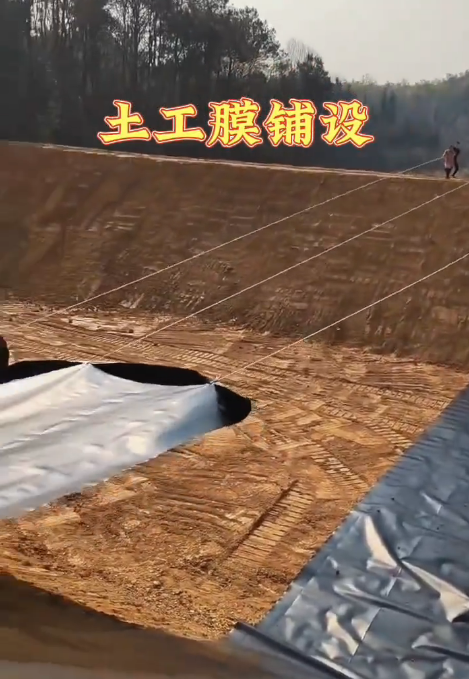
-
 Español
Español
-
 Portugues
Portugues
-
 Pусский
Pусский
-
 Français
Français
-
 Deutsch
Deutsch
-
 日本語
日本語
-
 한국어
한국어
-
 العربية
العربية
-
 Italiano
Italiano
-
 Nederlands
Nederlands
-
 Ελληνικά
Ελληνικά
-
 Svenska
Svenska
-
 Polski
Polski
-
 ไทย
ไทย
-
 Türk dili
Türk dili
-
 हिन्दी
हिन्दी
-
 Indonesia
Indonesia
-
 Melayu
Melayu
-
 Tiếng Việt
Tiếng Việt
-
 中文
中文
-
 dansk
dansk
-
 Magyar
Magyar
-
 қазақ
қазақ
-
 বাংলা
বাংলা
-
 עִברִית
עִברִית
-
 čeština
čeština
-
 Soomaali
Soomaali
-
 မြန်မာ
မြန်မာ
-
 فارسی
فارسی
-
 українська
українська
-
 norsk
norsk
-
 Gaeilge
Gaeilge
-
 беларускі
беларускі
-
 Română
Română
-
 ພາສາລາວ
ພາສາລາວ
-
 Filipino
Filipino
-
 lietuvių
lietuvių
-
 Cymraeg
Cymraeg
-
 македонски
македонски
-
 Suomalainen
Suomalainen
-
 slovenský
slovenský
-
 o'zbek
o'zbek
-
 اردو
اردو
-
 հայերեն
հայերեն
-
 Igbo
Igbo
-
 български
български
-
 سنڌي
سنڌي
-
 Shona
Shona
-
 සිංහල
සිංහල
-
 Hrvatski
Hrvatski
-
 íslenskur
íslenskur
-
 galego
galego
-
 català
català
-
 Zulu South Africa
Zulu South Africa
-
 Afrikaans isiXhosa
Afrikaans isiXhosa
-
 ಕನ್ನಡ
ಕನ್ನಡ
-
 lëtzebuergesch
lëtzebuergesch
-
 Indonésia Sunda
Indonésia Sunda
-
 basa jawa
basa jawa
-
 ગુજરાતી
ગુજરાતી
-
 Кыргызча
Кыргызча
-
 тоҷикӣ
тоҷикӣ
-
 Србија
Србија
-
 Twi
Twi
-
 Hawaii
Hawaii
-
 Cebu
Cebu
-
 नेपाल
नेपाल
-
 euskara
euskara
-
 Kurdî
Kurdî
-
 frissi
frissi
-
 יידיש
יידיש
-
 latvija
latvija
-
 slovenija
slovenija
-
 kiswahili
kiswahili
-
 ਪੰਜਾਬ
ਪੰਜਾਬ
-
 پښتو
پښتو
-
 საქართველოს
საქართველოს
-
 hua moni
hua moni
-
 bosna
bosna
-
 తెలుగు
తెలుగు
-
 தமிழ்
தமிழ்
-
 Kreyòl ayisyen
Kreyòl ayisyen
-
 Eesti
Eesti
-
 Corsica
Corsica
-
 Yoruba
Yoruba
-
 Gàidhlig na h-Alba
Gàidhlig na h-Alba
-
 Samoa
Samoa
-
 Монгол
Монгол
-
 Hausa
Hausa
-
 Azərbaycan
Azərbaycan
-
 አማራ
አማራ
-
 Shqipëria
Shqipëria
-
 Malagasy
Malagasy
-
 मराठी
मराठी
-
 മലയാളം
മലയാളം
-
 Malta
Malta
-
 ខ្មែរ
ខ្មែរ
-
 Chicheva
Chicheva
-
 中文(繁体)
中文(繁体)
-
 ଓଡିଆ
ଓଡିଆ
-
 Setswana
Setswana
-
 Afrikaans
Afrikaans
-
 Aymara
Aymara
-
 Башҡорт
Башҡорт
-
 Türkmenler
Türkmenler
-
 ትግሪኛ
ትግሪኛ
-
 Afaan Oromoo
Afaan Oromoo
-
 অসমীয়া
অসমীয়া
-
 Kinyarwanda
Kinyarwanda
-
 Ilocano
Ilocano
-
 Wolof
Wolof
-
 अवधी
अवधी
-
 Oluganda
Oluganda
-
 Bikol
Bikol
-
 Fulɓe
Fulɓe
-
 Kikongo
Kikongo
-
 Sango
Sango
-
 ދިވެހި
ދިވެހި
-
 Lingala
Lingala
-
 मैथिली
मैथिली
-
 Tsonga
Tsonga
-
 ꯃꯦꯏ ꯊꯥꯏ꯫
ꯃꯦꯏ ꯊꯥꯏ꯫
-
 brezhoneg
brezhoneg
-
 Furlan
Furlan
-
 नेवा
नेवा
-
 རྫོང་ཁ
རྫོང་ཁ
-
 Santali
Santali
-
 Аҧсуа
Аҧсуа
-
 Нохчийн
Нохчийн
-
 Чӑваш
Чӑваш
-
 Татар
Татар
-
 Batak Karo
Batak Karo
-
 دری
دری
-
 Diura
Diura
-
 Fengyu
Fengyu
-
 Eʋegbe
Eʋegbe
-
 Iban
Iban
-
 Fiji
Fiji
-
 Tonga
Tonga
-
 Inuktitut
Inuktitut
-
 Nahuatl
Nahuatl
-
 maaya yucatec
maaya yucatec
-
 Runasimi
Runasimi
-
 guarani
guarani
-
 Qafar
Qafar
-
 Acholi
Acholi
-
 Dinka
Dinka
-
 Luo
Luo
-
 Lundi
Lundi
-
 isiNdebele
isiNdebele
-
 Tshivenḓa
Tshivenḓa
-
 Sesotho sa Leboa
Sesotho sa Leboa
-
 Sesotho sa Borwa
Sesotho sa Borwa
-
 Ndumbe
Ndumbe
-
 Papuan Pidgin
Papuan Pidgin
-
 Rromani ćhib
Rromani ćhib
-
 Thok Nath
Thok Nath
yuxiatugong@163.com
+86 18353494641
-
 Español
Español
-
 Portugues
Portugues
-
 Pусский
Pусский
-
 Français
Français
-
 Deutsch
Deutsch
-
 日本語
日本語
-
 한국어
한국어
-
 العربية
العربية
-
 Italiano
Italiano
-
 Nederlands
Nederlands
-
 Ελληνικά
Ελληνικά
-
 Svenska
Svenska
-
 Polski
Polski
-
 ไทย
ไทย
-
 Türk dili
Türk dili
-
 हिन्दी
हिन्दी
-
 Indonesia
Indonesia
-
 Melayu
Melayu
-
 Tiếng Việt
Tiếng Việt
-
 中文
中文
-
 dansk
dansk
-
 Magyar
Magyar
-
 қазақ
қазақ
-
 বাংলা
বাংলা
-
 עִברִית
עִברִית
-
 čeština
čeština
-
 Soomaali
Soomaali
-
 မြန်မာ
မြန်မာ
-
 فارسی
فارسی
-
 українська
українська
-
 norsk
norsk
-
 Gaeilge
Gaeilge
-
 беларускі
беларускі
-
 Română
Română
-
 ພາສາລາວ
ພາສາລາວ
-
 Filipino
Filipino
-
 lietuvių
lietuvių
-
 Cymraeg
Cymraeg
-
 македонски
македонски
-
 Suomalainen
Suomalainen
-
 slovenský
slovenský
-
 o'zbek
o'zbek
-
 اردو
اردو
-
 հայերեն
հայերեն
-
 Igbo
Igbo
-
 български
български
-
 سنڌي
سنڌي
-
 Shona
Shona
-
 සිංහල
සිංහල
-
 Hrvatski
Hrvatski
-
 íslenskur
íslenskur
-
 galego
galego
-
 català
català
-
 Zulu South Africa
Zulu South Africa
-
 Afrikaans isiXhosa
Afrikaans isiXhosa
-
 ಕನ್ನಡ
ಕನ್ನಡ
-
 lëtzebuergesch
lëtzebuergesch
-
 Indonésia Sunda
Indonésia Sunda
-
 basa jawa
basa jawa
-
 ગુજરાતી
ગુજરાતી
-
 Кыргызча
Кыргызча
-
 тоҷикӣ
тоҷикӣ
-
 Србија
Србија
-
 Twi
Twi
-
 Hawaii
Hawaii
-
 Cebu
Cebu
-
 नेपाल
नेपाल
-
 euskara
euskara
-
 Kurdî
Kurdî
-
 frissi
frissi
-
 יידיש
יידיש
-
 latvija
latvija
-
 slovenija
slovenija
-
 kiswahili
kiswahili
-
 ਪੰਜਾਬ
ਪੰਜਾਬ
-
 پښتو
پښتو
-
 საქართველოს
საქართველოს
-
 hua moni
hua moni
-
 bosna
bosna
-
 తెలుగు
తెలుగు
-
 தமிழ்
தமிழ்
-
 Kreyòl ayisyen
Kreyòl ayisyen
-
 Eesti
Eesti
-
 Corsica
Corsica
-
 Yoruba
Yoruba
-
 Gàidhlig na h-Alba
Gàidhlig na h-Alba
-
 Samoa
Samoa
-
 Монгол
Монгол
-
 Hausa
Hausa
-
 Azərbaycan
Azərbaycan
-
 አማራ
አማራ
-
 Shqipëria
Shqipëria
-
 Malagasy
Malagasy
-
 मराठी
मराठी
-
 മലയാളം
മലയാളം
-
 Malta
Malta
-
 ខ្មែរ
ខ្មែរ
-
 Chicheva
Chicheva
-
 中文(繁体)
中文(繁体)
-
 ଓଡିଆ
ଓଡିଆ
-
 Setswana
Setswana
-
 Afrikaans
Afrikaans
-
 Aymara
Aymara
-
 Башҡорт
Башҡорт
-
 Türkmenler
Türkmenler
-
 ትግሪኛ
ትግሪኛ
-
 Afaan Oromoo
Afaan Oromoo
-
 অসমীয়া
অসমীয়া
-
 Kinyarwanda
Kinyarwanda
-
 Ilocano
Ilocano
-
 Wolof
Wolof
-
 अवधी
अवधी
-
 Oluganda
Oluganda
-
 Bikol
Bikol
-
 Fulɓe
Fulɓe
-
 Kikongo
Kikongo
-
 Sango
Sango
-
 ދިވެހި
ދިވެހި
-
 Lingala
Lingala
-
 मैथिली
मैथिली
-
 Tsonga
Tsonga
-
 ꯃꯦꯏ ꯊꯥꯏ꯫
ꯃꯦꯏ ꯊꯥꯏ꯫
-
 brezhoneg
brezhoneg
-
 Furlan
Furlan
-
 नेवा
नेवा
-
 རྫོང་ཁ
རྫོང་ཁ
-
 Santali
Santali
-
 Аҧсуа
Аҧсуа
-
 Нохчийн
Нохчийн
-
 Чӑваш
Чӑваш
-
 Татар
Татар
-
 Batak Karo
Batak Karo
-
 دری
دری
-
 Diura
Diura
-
 Fengyu
Fengyu
-
 Eʋegbe
Eʋegbe
-
 Iban
Iban
-
 Fiji
Fiji
-
 Tonga
Tonga
-
 Inuktitut
Inuktitut
-
 Nahuatl
Nahuatl
-
 maaya yucatec
maaya yucatec
-
 Runasimi
Runasimi
-
 guarani
guarani
-
 Qafar
Qafar
-
 Acholi
Acholi
-
 Dinka
Dinka
-
 Luo
Luo
-
 Lundi
Lundi
-
 isiNdebele
isiNdebele
-
 Tshivenḓa
Tshivenḓa
-
 Sesotho sa Leboa
Sesotho sa Leboa
-
 Sesotho sa Borwa
Sesotho sa Borwa
-
 Ndumbe
Ndumbe
-
 Papuan Pidgin
Papuan Pidgin
-
 Rromani ćhib
Rromani ćhib
-
 Thok Nath
Thok Nath

News Center
News Center
HOT PRODUCT
Durable Waterproof Sheet Roll Large Area Waterproofing
2025-10-20 08:19:45

Durable Waterproof Sheet Roll for Large Area Waterproofing: A Comprehensive Guide
Introduction
Waterproofing is a critical aspect of construction, renovation, and maintenance projects, ensuring the longevity and structural integrity of buildings, roofs, basements, and other surfaces exposed to moisture. Among the various waterproofing solutions available, durable waterproof sheet rolls stand out as an efficient, cost-effective, and long-lasting option for large-area applications.
This guide explores the features, benefits, installation methods, and applications of waterproof sheet rolls, providing a detailed understanding of their role in modern waterproofing systems.
---
1. Understanding Waterproof Sheet Rolls
1.1 What Are Waterproof Sheet Rolls?
Waterproof sheet rolls are flexible, high-performance membranes designed to prevent water infiltration into structures. They are manufactured from durable materials such as modified bitumen, PVC (polyvinyl chloride), TPO (thermoplastic polyolefin), EPDM (ethylene propylene diene terpolymer), and HDPE (high-density polyethylene). These sheets are available in various thicknesses, widths, and lengths to accommodate different waterproofing needs.
1.2 Key Features of High-Quality Waterproof Sheet Rolls
- Durability: Resistant to UV rays, temperature fluctuations, and mechanical stress.
- Waterproofing Efficiency: Impermeable to water, preventing leaks and moisture damage.
- Flexibility: Adapts to different surfaces, including uneven or irregular substrates.
- Chemical Resistance: Withstands exposure to harsh environmental conditions and chemicals.
- Ease of Installation: Can be mechanically fastened, adhered, or heat-welded for seamless waterproofing.
- Longevity: Provides long-term protection, often lasting 20-30 years or more.
---
2. Types of Waterproof Sheet Rolls
Different waterproof sheet rolls are designed for specific applications. The most common types include:
2.1 Bituminous Waterproofing Membranes
- Made from asphalt-modified bitumen reinforced with polyester or fiberglass.
- Ideal for roofs, foundations, and below-grade waterproofing.
- Applied via torch-on or self-adhesive methods.
2.2 PVC (Polyvinyl Chloride) Membranes
- Lightweight, flexible, and resistant to punctures.
- Suitable for roofs, tunnels, and water containment structures.
- Installed using heat welding or adhesive bonding.
2.3 TPO (Thermoplastic Polyolefin) Membranes
- Environmentally friendly, recyclable, and energy-efficient.
- Commonly used in commercial roofing due to heat-reflective properties.
- Seam welding ensures a watertight seal.
2.4 EPDM (Ethylene Propylene Diene Terpolymer) Membranes
- Highly elastic and weather-resistant.
- Used in roofing, ponds, and waterproofing decks.
- Installed via adhesive or ballasted systems.
2.5 HDPE (High-Density Polyethylene) Membranes
- Extremely durable and resistant to root penetration.
- Ideal for landfill liners, reservoirs, and underground waterproofing.
- Mechanically fastened or welded for secure installation.
---
3. Benefits of Using Waterproof Sheet Rolls for Large Areas
3.1 Superior Waterproofing Performance
Unlike liquid-applied membranes, sheet rolls provide a continuous, uniform barrier against water, reducing the risk of weak spots or application errors.
3.2 Faster Installation
Large sheets cover extensive areas quickly, reducing labor costs and project timelines compared to multiple-layer liquid coatings.
3.3 Adaptability to Various Surfaces
Waterproof sheet rolls conform to complex geometries, including curves, corners, and protrusions, ensuring complete coverage.
3.4 Minimal Maintenance
Once installed correctly, waterproof sheets require little upkeep, making them a cost-effective long-term solution.
3.5 Environmental Resistance
High-quality sheets resist UV degradation, extreme temperatures, and chemical exposure, ensuring performance in harsh climates.
---
4. Applications of Waterproof Sheet Rolls
4.1 Roofing Systems
- Flat roofs: Prevents ponding water and leaks.
- Green roofs: Protects against root penetration and moisture damage.
- Metal roofs: Provides an additional waterproofing layer.
4.2 Below-Grade Waterproofing
- Basements: Shields against groundwater infiltration.
- Tunnels and underground structures: Prevents water seepage.
4.3 Civil Engineering Projects
- Bridges and highways: Protects structural elements from water damage.
- Water reservoirs and dams: Ensures leak-proof containment.
4.4 Residential and Commercial Buildings
- Bathrooms and wet areas: Prevents mold and water damage.
- Balconies and terraces: Enhances durability against weather exposure.
4.5 Industrial Applications
- Chemical storage areas: Resists corrosive liquids.
- Parking decks: Protects against de-icing salts and water penetration.
---
5. Installation Methods for Waterproof Sheet Rolls
Proper installation is crucial for optimal performance. The most common techniques include:
5.1 Torch-On Application (Bituminous Membranes)
- The membrane is heated with a torch to melt the bitumen, creating a strong bond with the substrate.
- Requires skilled labor to avoid overheating or fire hazards.
5.2 Self-Adhesive Membranes
- Pre-coated with adhesive for easy peel-and-stick installation.
- Ideal for DIY projects and quick repairs.
5.3 Heat Welding (PVC/TPO Membranes)
- Hot air welding fuses overlapping sheets for a seamless, watertight joint.
- Ensures long-lasting waterproofing with no weak points.
5.4 Mechanical Fastening
- Sheets are secured using nails, screws, or plates, often used in roofing applications.
- Suitable for areas with high wind uplift risks.
5.5 Ballasted Installation (EPDM Roofing)
- Membranes are laid loose and held in place with gravel, pavers, or vegetation.
- Cost-effective for large flat roofs.
---
6. Maintenance and Longevity
While waterproof sheet rolls are low-maintenance, periodic inspections ensure continued effectiveness:
- Check for punctures, tears, or seam separations.
- Clear debris from roofs and drainage systems.
- Re-seal edges or penetrations if necessary.
With proper installation and care, waterproof sheet rolls can last 20-50 years, depending on material and environmental conditions.
---
7. Choosing the Right Waterproof Sheet Roll
Consider the following factors when selecting a waterproof sheet roll:
- Substrate type (concrete, wood, metal, etc.)
- Climate conditions (UV exposure, temperature extremes)
- Expected foot traffic or mechanical stress
- Budget and project requirements
Consulting with waterproofing professionals ensures the best material and installation method for your needs.
---
8. Conclusion
Durable waterproof sheet rolls offer an efficient, long-lasting solution for large-area waterproofing across residential, commercial, and industrial applications. Their versatility, ease of installation, and resistance to environmental factors make them a preferred choice for preventing water damage and enhancing structural durability.
By selecting the appropriate type of waterproof sheet roll and ensuring proper installation, property owners and contractors can achieve reliable, maintenance-free waterproofing for decades. Whether for roofing, basements, or civil engineering projects, waterproof sheet rolls provide a robust barrier against moisture, safeguarding investments and ensuring peace of mind.
Investing in high-quality waterproofing materials today prevents costly repairs tomorrow, making waterproof sheet rolls an essential component of modern construction and maintenance practices.
---
This comprehensive guide covers all aspects of durable waterproof sheet rolls, providing valuable insights for professionals and homeowners alike. If you have further questions or need assistance with waterproofing solutions, consulting an expert is always recommended.








 Phone
Phone
Comment
(0)